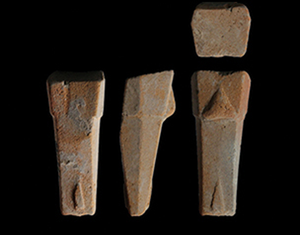Published online by Cambridge University Press: 06 August 2021

The origins of metal coinage and the monetisation of ancient economies have long been a research focus in both archaeology and economic history. Recent excavations of an Eastern Zhou period (c. 770–220 BC) bronze foundry at Guanzhuang in Henan Province, China, have yielded clay moulds for casting spade coins. The technical characteristics of the moulds demonstrate that the site functioned as a mint for producing standardised coins. Systematic AMS radiocarbon-dating indicates that well-organised minting developed c. 640–550 BC, making Guanzhuang the world's oldest-known, securely dated minting site. This discovery provides important new data for exploring the origin of monetisation in ancient China.